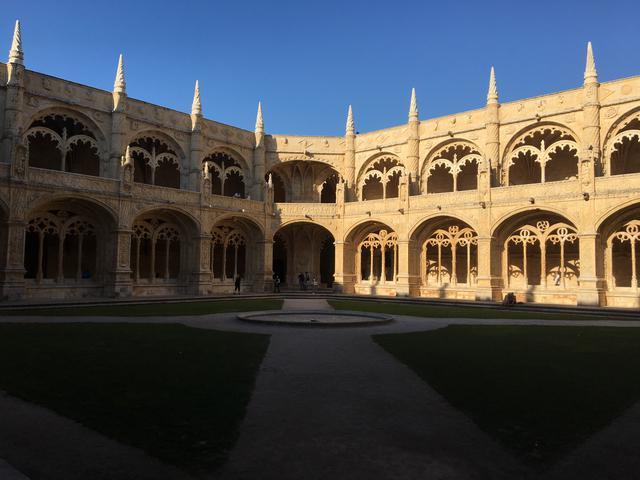Cloister

The cloister of the Jerónimos Monastery is a true masterpiece of Manueline architecture, located in the Belém district of Lisbon, Portugal. This stunning architectural gem is considered one of the most beautiful in the world, showcasing a perfect harmony of proportions, decorative exuberance, and unique design elements. The warm, patinated color of the intricately carved mausoleum creates a mesmerizing play of light and shadow, transforming the cloister into a magical space that evolves with the shifting hours of the day.
The construction of the cloister was a labor of love directed by several master builders in three successive campaigns, each leaving their mark on the structure. The first phase was overseen by the master Diogo Boitaca, who laid the foundation stones and defined the initial traces of the monastery and church. The ground floor of the cloister, completed during this phase, showcases pure Manueline and naturalistic decoration in the Gothic style, with intricate details that reflect the craftsmanship of the era.
In 1517, King Manuel I decided to expand the monastery to accommodate one hundred monks and create a more sumptuous setting for the royal family's tombs. João de Castilho took over the construction, finishing and decorating the columns on the ground floor and beginning work on the second floor. The transition to the Renaissance style under Castilho's direction introduced a harmonious blend of architectural elements, creating a unique fusion of styles that is a testament to the evolving tastes of the time.
After King Manuel's death, his son João III entrusted the completion of the cloister to Diogo de Torralva, who oversaw the classicist phase of the building until 1551. Torralva's contribution included the construction of the platybanda, or frieze, which adorns the upper part of the cloister with elegant Renaissance motifs. Despite its original purpose as a space for the Jerome monks, the cloister also served as a venue for royal events, with historical accounts mentioning fishing activities and even bullfights taking place within its walls.
Today, visitors to the Jerónimos Monastery can marvel at the intricate details of the cloister, from the delicate carvings on the columns to the ornate decorations that adorn its walls. The cloister stands as a testament to the rich architectural heritage of Portugal, showcasing the country's artistic prowess and cultural legacy. A visit to this architectural marvel is a journey through time, offering a glimpse into the grandeur and beauty of the Manueline era in Lisbon.
© ChatGPT 3.5